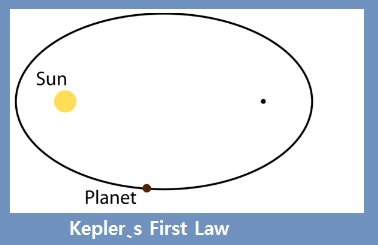There are 3 laws discovered by Kepler. These empirical laws are known as Kepler’s laws of planetary motion.
The elliptical orbits of planets were represented by calculations of the orbit of Mars. From this, Kepler describes that different bodies in the Solar System, including those who are very away from the Sun, also have elliptical orbits. The second law assists to establish that when a planet is closer to the Sun, it travels quicker. The third law expresses that the farther a planet is from the Sun, the slower its orbital speed, and vice versa.
Table of Contents
Kepler’s First Law
Kepler’s first law states that “Each planet moves in an elliptical orbit, with the sun at one focus of the ellipse.”

Kepler’s Second Law
Kepler’s second law states that “The radius vector drawn from the sun to the planet sweeps out equal areas in equal intervals of time.”

Kepler’s Third Law
Kepler’s third law states that ” The square of the time period of revolution of a planet around the sun in an elliptical orbit is directly proportional to the cube of its semi-major axis”.
T2 ∝ a3
